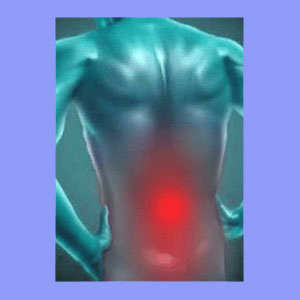
Sciatica muscle pain is one of the most common reader complaints and many patients do not even realize that although the pain exists in the muscular structures, it is actually enacted by a neurological mechanism. Most sciatica sufferers must endure widespread muscular pain in the legs, buttocks, lower back and possibly other areas, including the groin, hips and feet.
Muscle pain comes in a great number of symptomatic varieties, including burning pain, dull pain, sharp pain and the dreaded sciatica muscle spasm. This can be one of the worst possible symptomatic expressions, particularly when spasms are continuous and uncontrollable.
This article will provide information about the expression of muscular pain in the buttocks, legs and feet associated with sciatic nerve causations. We will investigate why the muscles seem to suffer from this nerve pain and also describe atypical pain patterns which may be misdiagnosed as sciatica.
Sciatica Muscle Pain Explained
Muscle pain is discomfort which exists within the major muscles of the lower body anatomy. The most common locations include the frontal thighs, the rear thighs and the sides or back of the calves. However, all the muscles of the legs and feet are also highly susceptible to symptomatic attacks, as well.
It is rare for these pains to be sourced by any problem with the muscle itself, unless localized injury has occurred. Instead, sciatica due to actual spinal causations will usually affect muscles through the nerves which innervate them with life energy.
In non-structural cases, the root source of sciatica muscle pain is often regional ischemia, since this process will attack the structural integrity of nerves and muscles alike in a specific affected area. Worse still, oxygen deprivation is a highly variable process which may be targeting the spinal nerve roots which form the sciatic nerve, the sciatic nerve itself or even the specifically affected muscular structure.
In short, sciatica muscle pain is experienced in the muscles, ligaments and/or tendons of the lower body, but is almost never caused by injury or degeneration of the muscular tissue itself.
Diagnosis of Muscle Pain
Most often, when sciatica patients report muscular pain, the doctor will do a variety of tests and will often order a spinal MRI if a structural issue is suspected.
Every nerve root in the spine corresponds to a specific set of bodily muscles, so the doctor will look for a connection between the actual symptoms experienced and any irregularity located at the corresponding vertebral level.
In sciatica sufferers, the spinal levels most commonly involved are L4, L5 and S1, which are also the most typical places for spinal osteoarthritis and various disc pathologies, such as herniated discs and degenerative disc disease.
In most cases, structural abnormalities will be found in the lumbar or lumbosacral spine, regardless of whether the person has pain or not. In fact, abnormalities are virtually universal here and are most often blamed for causing symptoms when they rarely actually do anything of consequence.
Ironically, sometimes structural issues are truly responsible for sourcing sciatica, but the problem exists in the cervical spine and therefore goes unnoticed. Spinal stenosis in the neck can cause widespread symptomatic expressions and many cases are never found. Instead, the pain is blamed on coincidental and innocent lumbar abnormalities.
Of course, oxygen deprivation is another of the diagnostic nightmares, causing a great number of pain patterns and rarely being correctly diagnosed. Add the possibility for disease processes, diabetes and fibromyalgia into the mix and finding an accurate diagnosis is harder than ever.
Sciatica Muscle Pain and Fibromyalgia
Muscle pain can also be diagnosed as fibromyalgia. This is one of the worst inventions of the modern rheumatology industry and has doomed so many patients to suffer endlessly due to pure care provider ignorance. Fibromyalgia demonstrates evidence of being a severe ischemia syndrome in which the causative elements have grown beyond the normal extent and have taken over almost the entire anatomy.
Medical treatment has proven to be useless and alternative treatments work for some, but not others. Knowledge therapy is an alternative worth considering, since it can be extremely effective in cases of mindbody causation and displays no risk factors whatsoever. This makes it a refreshing change from the toxic and hazardous FMS drugs typically given to poison patients.
To conclude this article, the most important lesson to be remembered is that when it comes to true sciatica, even when the muscles hurt, it is because some process is affecting the nerves which supply them with signals from the brain. Therefore, any treatment provided to the muscle itself will never cure the condition or elicit lasting relief. Instead, the source causative process must be discovered and addressed in order to achieve a real cure.





